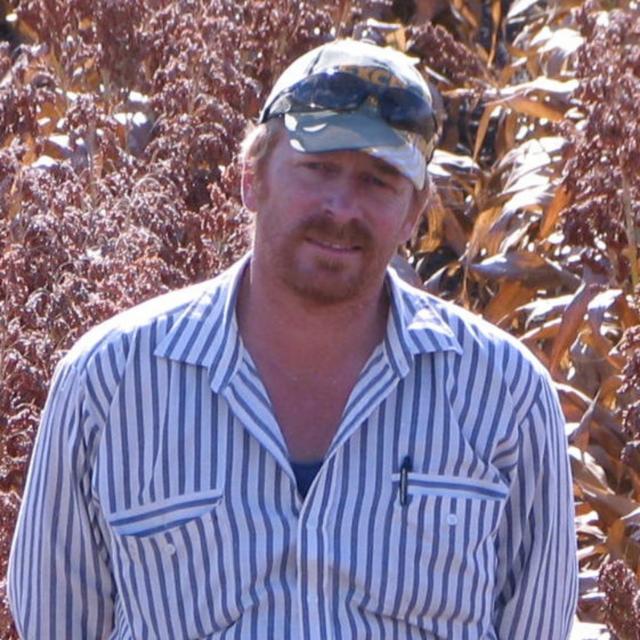
With wide smiles, sorghum growers in southern Queensland are busy harvesting what may be their biggest crop in 10 years.
ABARES’ latest forecast has the national crop pegged at 1.97 million tonnes from 586,000 hectares sown.
AgForce grains president Brendan Taylor said above-average rainfall across southern Queensland in spring had helped establish early-sown sorghum.
“The crop planted across the Darling Downs in late August/ early September is mostly harvested and the results have been sensational, with yields between seven and 8.5 yields,” he said.
“In 2021, the seasonal conditions were near-perfect. Some flooding in November, yes, but it was largely beneficial for sorghum growers in southern Queensland.”
Mr Taylor said harvest would proceed at pace through February and March and he predicted “heaps of sorghum flowing into bins”.
“The later-sown crops look very good at the moment. Some just need a bit more rain to finish them off but then, of course, we need the rain to stop in time for harvest!
As an “educated guess”, Mr Taylor said growers this year had forward sold up to 30 per cent of their sorghum crop to exploit the premiums offered.
But, he said prices had remained relatively steady, with the market trading at about $290 per tonne due to strong local and international demand.
“It’s the first time in a long time that a bumper summer crop has followed a bumper winter crop, though central Queensland was a bit drier,” Mr Taylor said.
“We managed to string that together and now there is good soil moisture for the following winter crop.”
That is the good news. What is quelling growers’ joy, according to Mr Taylor, is soaring input costs, which is making the entire production sector nervous as it enters 2022.
Compound phosphorus fertilisers have more than doubled since last year and urea prices have trebled.
This, combined with uncertainty around grain prices and the seasonal forecast, means farmers have some tough decisions to make in their pre-season planning meetings.
“We’re getting great crops but it’s costing a lot of money to grow them,” Mr Taylor said. “Cost of production is through the roof. It’s definitely putting a squeeze on margins.
“And, you can’t not use pesticides and fertiliser because then you cut off your nose to spite your face. Crops need nutrients.
“It’s making growers question what crop to grow next.”
Mr Taylor said while certain crops such as chickpeas don’t require the up-front application of nitrogen, international demand for the legume is low.
“So, there is no point growing a crop no one wants.
“Despite last year’s bumper crop, there is still significant demand for wheat and barley through the feeder section. So, it’s certainly not straightforward for growers.”
Mr Taylor said while the cost of nutrition products remained high, soil preparation was “incredibly important”.
“Hopefully over the next six to 12 months, input costs will ease.”
Mr Taylor said while Covid was impacting prices, it was complicated by factors such as high energy costs, labour problems and international freight fees.






